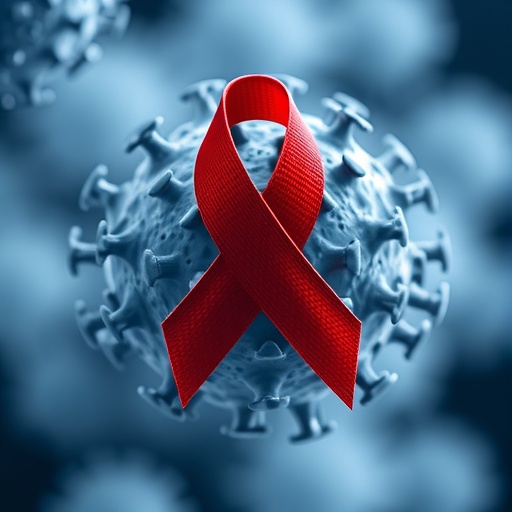Nearly two decades ago, the world witnessed a groundbreaking medical milestone when Timothy Ray Brown, an HIV-positive man battling acute myeloid leukemia, underwent a pair of stem cell transplants that did not just treat his cancer but astonishingly led to his being functionally cured of HIV. This unprecedented success was achieved by transplanting donor cells that lacked the CCR5 receptor—a crucial molecular gateway that HIV exploits to enter immune cells. Brown’s case ignited hope and intense scientific curiosity, opening new avenues into the elusive quest for an HIV cure.
Building on this foundation, a pioneering scientific collaboration co-led by Dr. Lishomwa Ndhlovu at Weill Cornell Medicine and Dr. Jonah Sacha at Oregon Health & Science University has now gained significant momentum. Recently awarded an NIH MERIT Award, their ambitious research program aims to unravel the biological and immunological mechanisms responsible for the eradication of HIV in patients who have undergone similar stem cell transplants. With approximately $8.2 million in funding guaranteed over an initial five years, with a potential extension up to ten, this endeavor represents a vital step forward in translating rare cure cases into scalable therapeutic strategies.
The crux of their research hinges on understanding why such transplants led to complete viral clearance in some patients but failed in others, despite the uniformity of the procedure. Bone marrow transplantation, although a potential cure, remains a burdensome intervention with considerable risks including graft-versus-host disease, severe immunosuppression, and life-threatening complications. As Dr. Ndhlovu emphasizes, the group’s focus is on deciphering the immune responses that mediate viral eradication in those few exceptional survivors, to inform the design of less invasive, broadly applicable immunotherapies against HIV.
One of the distinctions of this research is its comprehensive analysis of immune function drawn from a unique cohort of individuals who have undergone stem cell transplantation for hematologic malignancies. These participants, including some like Marc Franke, Adam Castillejo, and Paul Edmonds—who have bravely shared their journeys—have contributed invaluable clinical samples and insights. Crucially, all these individuals have ceased antiretroviral therapy without viral rebound, constituting a functional cure, a testament to the profound immune reconstitution they experienced.
Central to the investigative approach are state-of-the-art immunological assays and molecular profiling methods designed to interrogate the cellular and humoral arms of the immune system. By evaluating the landscape of T-cell responses, natural killer cell activity, and the presence or absence of viral reservoirs, the researchers strive to pinpoint the particular immune signatures associated with HIV eradication. Such granular mechanistic data are expected to shed light on the interplay between host immunity, viral persistence, and the unique features of donor-derived hematopoietic cells.
Complementary to human studies, the research leverages innovative preclinical models to replicate and validate findings. At Weill Cornell, a sophisticated humanized mouse model equipped with HIV-infected human immune cells allows dissection of immune cell functions in vivo, offering dynamic insights into viral clearance processes. Meanwhile, Dr. Sacha and his team at Oregon Health & Science University have engineered a non-human primate model closely mimicking human immune reconstitution following stem cell transplantation, successfully reproducing virus-clearing phenomena. These platforms provide critical translational bridges from bench to bedside.
The ultimate vision driving this endeavor is the development of a novel immunotherapy capable of selectively targeting and eliminating HIV-infected cells without the need for risky bone marrow transplantation. By harnessing the immune mechanisms elucidated through their studies, the investigators hope to engineer targeted cell-based or molecular treatments that can replicate the ‘cure effect’ safely and effectively in a wider population of people living with HIV.
This research undertaking not only advances scientific understanding but also embodies the spirit of human resilience and altruism. Participants like Adam Castillejo, who became the second person publicly declared cured of HIV after Brown, actively engage as advocates and collaborators. Their willingness to contribute to science underscores an ethical commitment to leverage personal experiences for global health impact. Castillejo, now a Global HIV Ambassador, envisions this collaboration as pivotal in extinguishing the AIDS pandemic.
Furthermore, the study holds significant implications for immunology and infectious disease fields at large. An in-depth characterization of immune system recalibration post-transplant may reveal novel pathways applicable to other viral infections and malignancies. By dissecting how donor hematopoietic cells remodel immunity and confer resistance to HIV, scientists can better understand immune plasticity, tolerance, and memory in contexts of chronic infection.
While the research journey is fraught with complexity, the stakes are tremendous. As participant Paul Edmonds, living with HIV for over thirty years prior to his transplant, expresses, the hope is that these investigations will yield therapies that eradicate the virus indefinitely. The intersection of cutting-edge cellular biology, immunotherapy, and translational medicine in this study exemplifies the innovative drive needed to confront one of humanity’s most enduring viral scourges.
In summary, the NIH MERIT Award-supported project spearheaded by Drs. Ndhlovu and Sacha represents a strategic and multidisciplinary approach to unlock the mysteries underlying the rare phenomenon of HIV cure following stem cell transplantation. By meticulously dissecting immune correlates of viral clearance and validating them in robust animal models, this research aspires to catalyze development of safe, effective, and scalable curative immunotherapies. The collaboration offers an inspiring blueprint of hope emerging from scientific rigor and human courage.
Subject of Research: HIV cure mechanisms following stem cell transplantation and development of immunotherapy to eradicate HIV.
Article Title: Not provided.
News Publication Date: Not provided.
Web References:
- Timothy Ray Brown cure report: https://www.liebertpub.com/doi/10.1089/aid.2014.0224
- HIV-free patient study: https://pubmed.ncbi.nlm.nih.gov/39484913/
- Non-human primate model detailed study: https://www.cell.com/immunity/fulltext/S1074-7613(23)00216-9?_returnURL=https%3A%2F%2Flinkinghub.elsevier.com%2Fretrieve%2Fpii%2FS1074761323002169%3Fshowall%3Dtrue
References: Not provided.
Image Credits: Dr. Lishomwa Ndhlovu
Keywords: HIV research; Human immunodeficiency virus; Stem cells; Cancer




